Photographs by the author; formatting by the author and Jacqueline Banerjee. You may use the images without prior permission for any scholarly or educational purpose as long as you (1) credit the photographer and (2) link your document to this URL in a web document or to the Victorian Web in a print document. [Click on the images to enlarge them.]
The interior of the church


Left: View from the west door. Right: Chancel screen and apse vault.
Inside St Andrew’s, the nave has a plain wagon roof, while the tower and the chancel have stone vaults. All the furnishings were designed by Street (see Pevsner and Neave 397), who used Clayton & Bell for the glazing and Potter for the ironwork screens of the chancel and baptistery, and presumably for the covers of the heating system.

The apse vault.

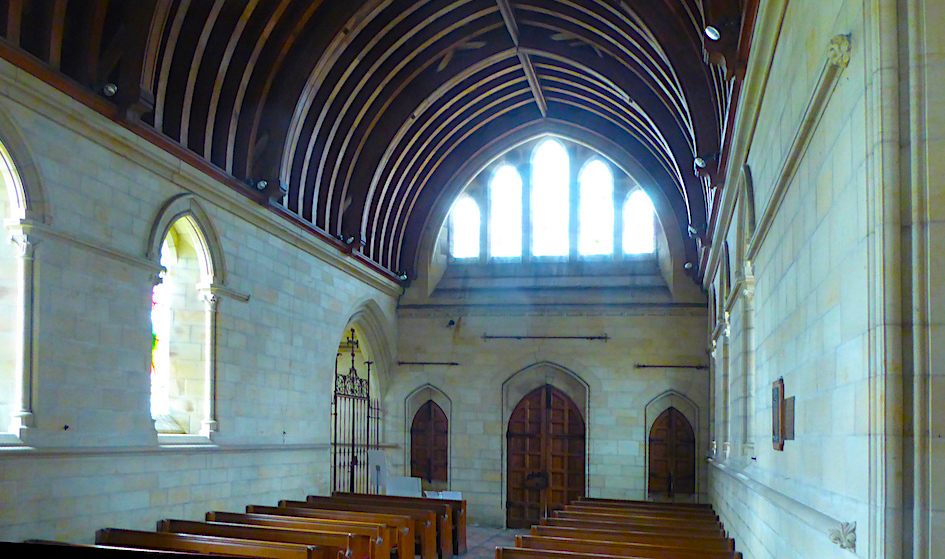
Left: Sedilia and arcading on the apse wall use the same fossiliferous stone as the pulpit. Right: The nave seen from the lectern, with baptistery screen visible on left.
Fittings
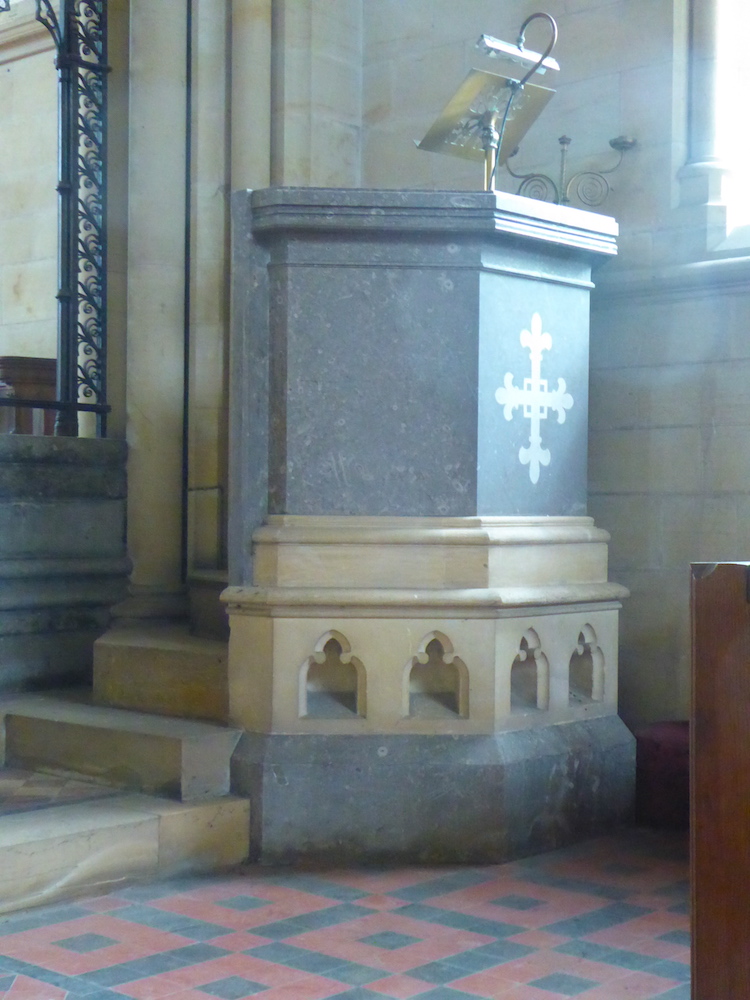
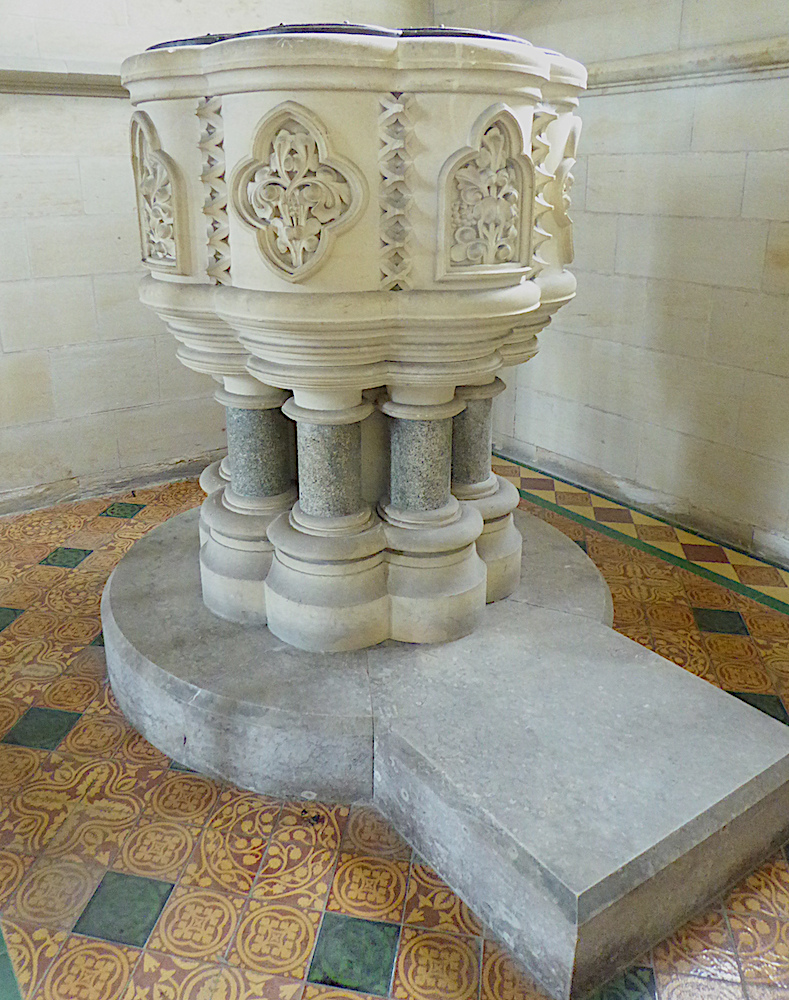
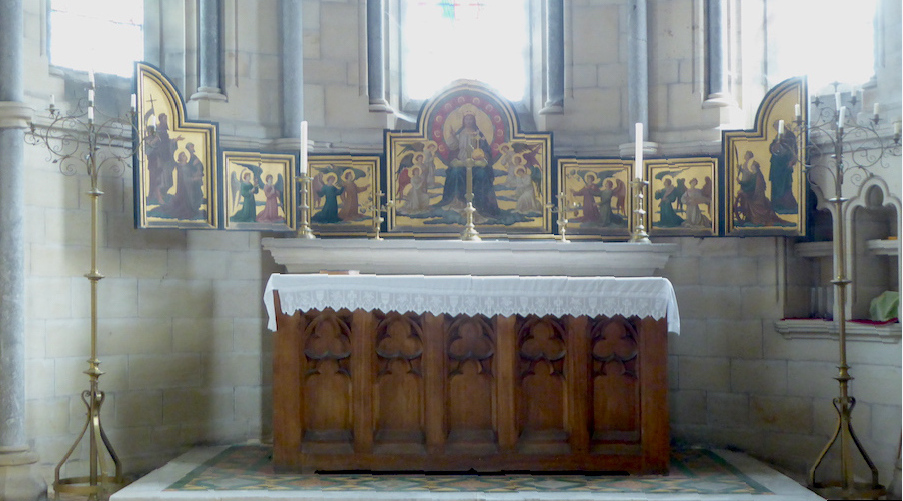
Left to right: (a) Pulpit, using a fossiliferous limestone from Derbyshire and Caen stone. (b) Font, in Caen stone. (c) Altar, and altarpiece wth "Te Deum."
One wonders how much, how closely, did the architect design or prescribe all these pieces? Presumably the sedilia and pulpit came direct from his drawing office; fonts are rarely attributed to a factory so it also probably came from there, but the artist of the lively polyptych "Te Deum" altarpiece is not named.
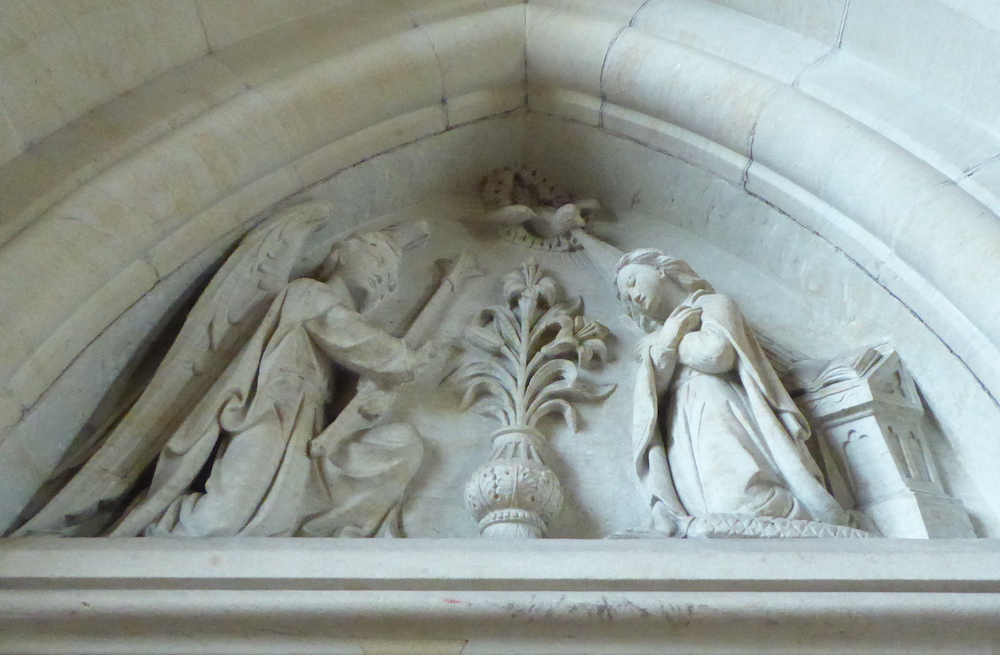
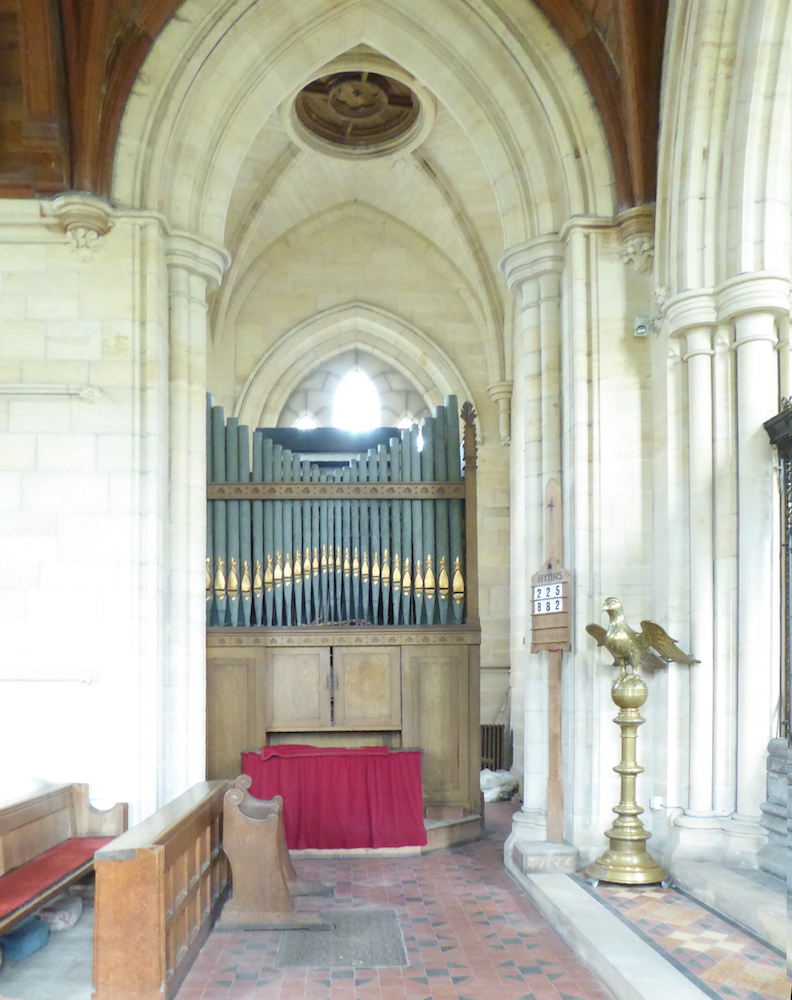
Left: Tympanum representing The Annunciation over the vestry door. Right: Organ under tower.
Nikolaus Pevsner and David Neave suggest that James Redfern might have carved the tympanum over the vestry door. In his restoration of Weaverthorpe church, in 1870-2, Street had employed Redfern to make a statue of St Andrew; there is a statue of the Virgin by Redfern at West Lutton, which might be compared to the tympanum (746). By some oversight in planning, two windows under the tower (a “delightful” Creation and a “typical” Jesse Tree), and this pleasant little carving, can hardly be seen because, as can be seen above right, the organ almost fills the space under the tower.
Stained glass
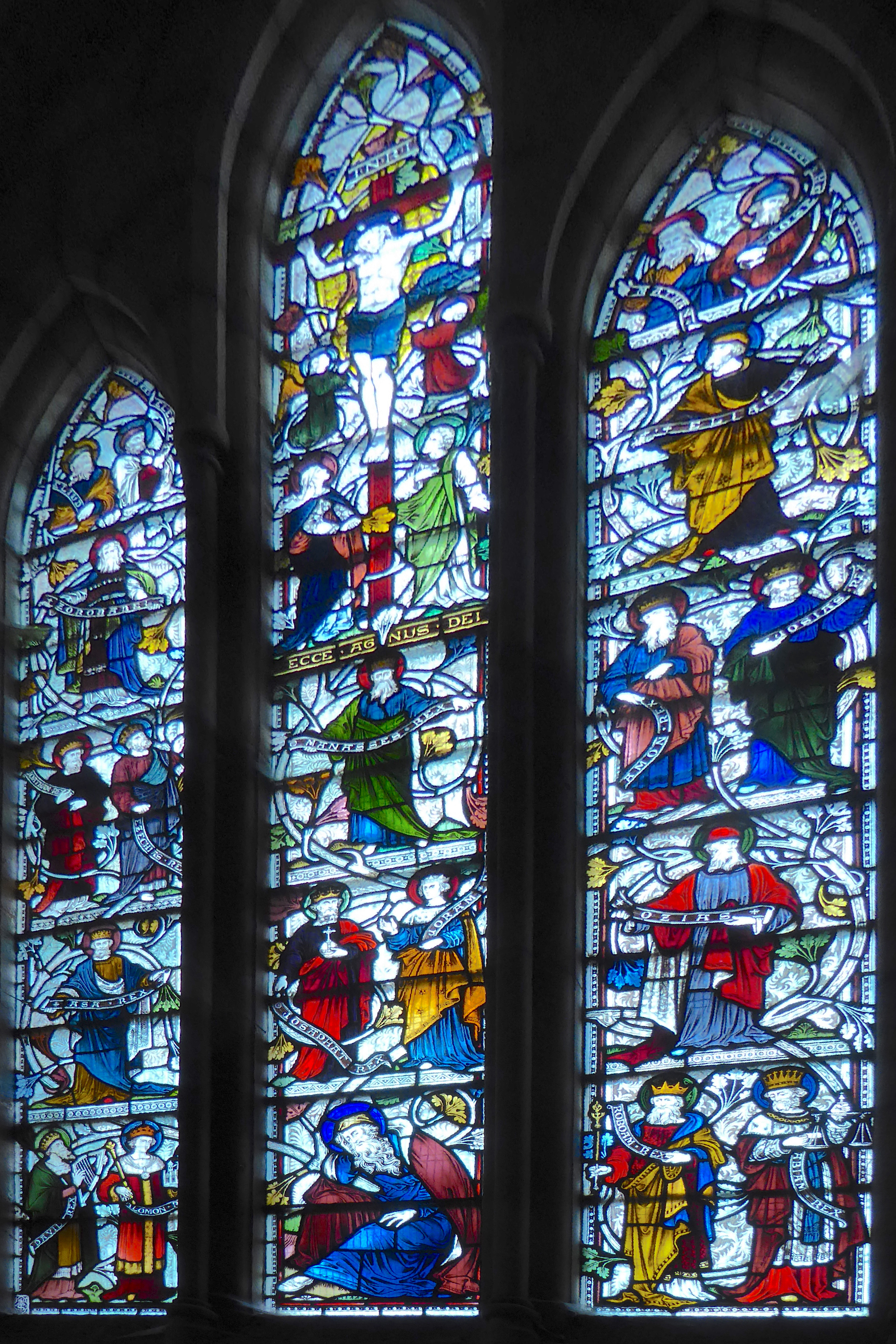
Jesse window under the tower.
The windows follow the logical time-sequence of the Passion, Resurrection and Ascension, from left to right in the eastern parts of the church. Glass by Clayton & Bell depicts the The Three Maries at the Tomb, and the Resurrection of Christ, the Entombment and Noli me tangere; the Nativity with visit of Magi and shepherds in the group of five lancets in the west wall; and the Baptistery has a roundel with Christ as All-mighty. In the nave, the south side has three national saints (including S. Patricius, i.e., St Patrick), and the north side has three archangels (including St Raphael). The Jesse window, one of the two windows under the tower, mentioned above, is shown at an angle at the side here. Many of these windows have a monogram TS and date 1877 in the bottom left-hand corner. The group of five lancets in the east wall of the vestry have decoration based on a geometric arrangement of circles, but could only be seen from the outside.
The high church imagery favoured by Sykes and his architect, approved in the four statues from Bristol, is also evident in the Latin titles on some chancel glazing: “Videntibus illis elevatus est” is from an antiphon for Vespers of the Ascension (Acts 1:9), while even the names of the saints, like St Patrick above) in the nave have Latin forms, not English: the Nativity needed no title. Sykes’ wife Jessica converted to Roman Catholicism in 1882, taking their infant son Mark with her (Hull History Centre).
The church is now looked after by the Churches Conservation Trust.
Links to related material
- St Andrew, East Heslerton, Yorkshire: Exterior
- (Former) Vicarage, also by G. E. Street, and its setting
- Stained glass windows at St Andrew's by Clayton and Bell
- Minton tiles at St Andrew's (also seen in some of the images above)
Bibliography
Church of St Andrew, East Heslerton, North Yorkshire. Leaflet by the Churches Conservation Trust, 2011.
Fulton, Moira. “The Sykes Churches of East Yorkshire: the baronets, the architects and the craftsmen.” https://www.youtube.com/watch?v=8XtIVcPIs2w
Hull History Centre, with details of Sykes family history: http://catalogue.hullhistorycentre.org.uk/catalogue/U-DDSY?tab=description.
Pevsner, Nikolaus, and David Neave. Yorkshire: York and the East Riding. New Haven and London: Yale University Press, 2002.
Quiney, A. “Sledmere”, Proceedings, Archaeological Journal vol. 141 (1984): 51-54.
Created 19 May 2022